Protect the Lawn

Agri-Bac protects the lawn
Agri-Bac can help you improve your lawn's resistance to common diseases and fungal infections while also strengthening roots, improving nutrient availability, and stress tolerance. Improve the color and health of your lawn with our beneficial bacteria.
Consider applying Agri-Bac seasonally, at the onset of common disease or after signs of stress from your plants.
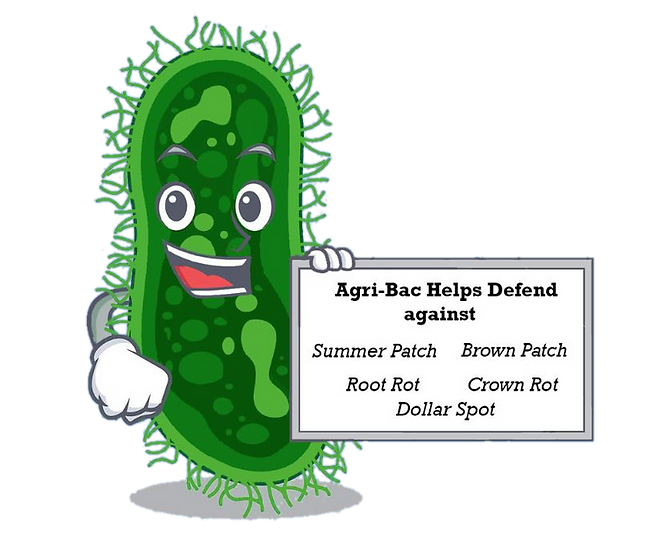

Untreated
Treated
Application
Shake well before using. Dilute 1 tbsp of Agri-Bac into one gallon of dechlorinated water. (To dechlorinate water, let water sit for 24 hours before applying the product to water) Spray directly onto the sod or grass. If applying to infected grass, apply directly onto infected area. For best results, use once a month.
Volume: 2oz
Odor: Very Strong Organic
Color: Yellowish Brown
Shelf life: 9 months (unopened)

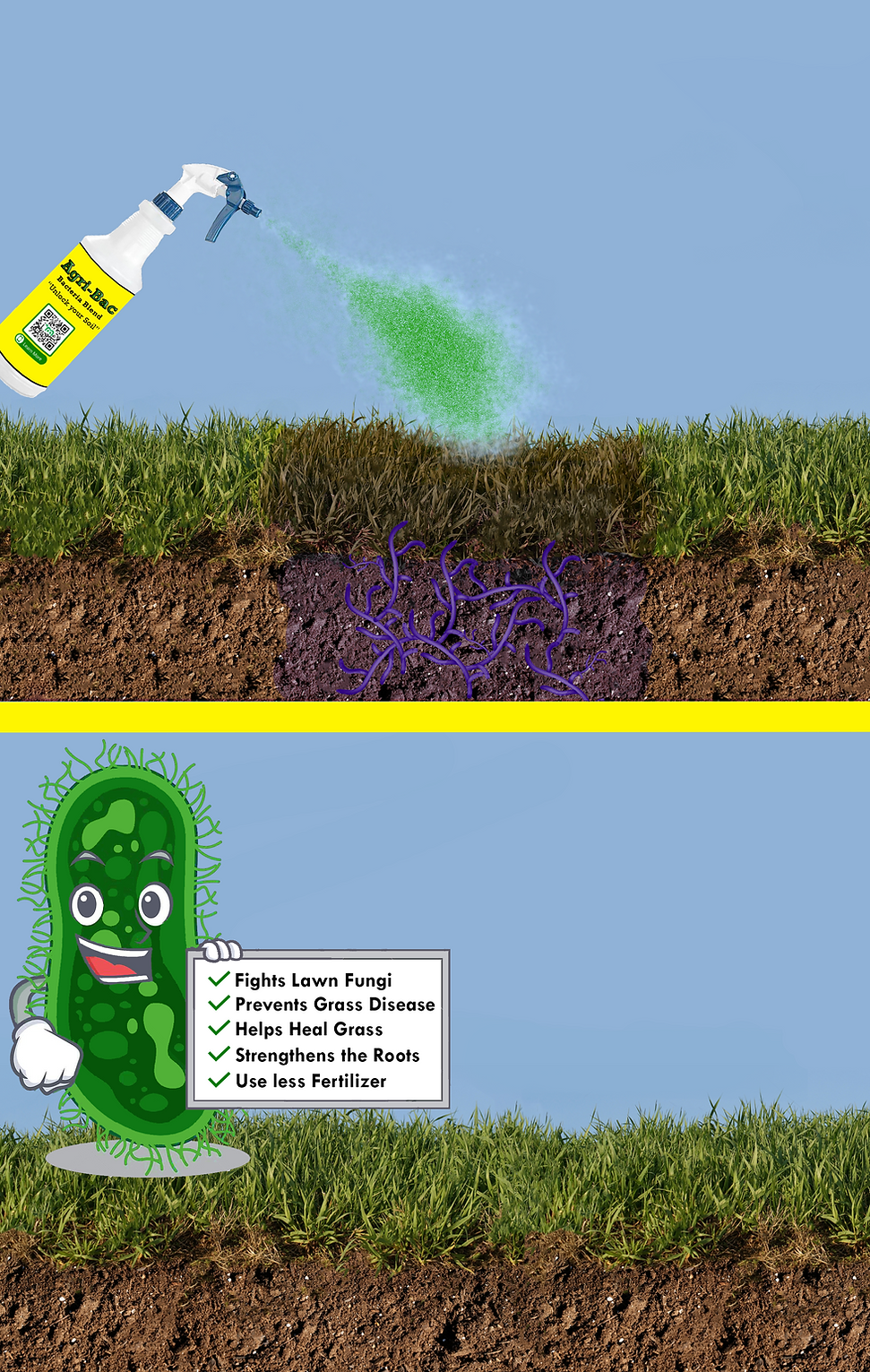
Common Fungal Diseases Agri-Bac Resolves


Brown Patch
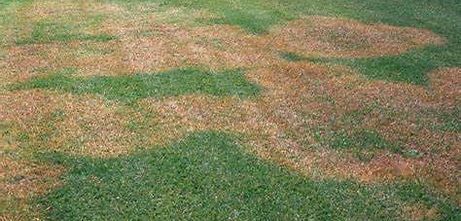
Brown patch is caused by the fungus Rhizoctonia solani. It is the most widespread of all turf diseases, occurring throughout the world and attacking all known turfgrass species. The disease appears as a blight in circular patches ranging in size from a few inches to several feet. A dark purple to grayish-brown border ("smoke ring") may appear at the margins of patches, especially in periods of high humidity. The smoke ring effect is most common on close-cut (≤1”) turf such as golf greens, appearing infrequently on higher cut turf such as fairways and lawns.
White aerial mycelium may be observed under humid conditions. Irregular lesions with purplish to brown borders and tan centers are observed on leaves of high cut turf, and affected leaves eventually turn brown and dry out. Distinct lesions may not occur on low cut turf, and leaves may simply turn brown and die back. If conditions remain conducive to disease, large areas of turf may rapidly become infected. Although leaves in blighted area are usually killed, a return to cooler weather enables regrowth from crowns, stolons, or rhizomes. Crowns are rarely killed. Brown to black sclerotia are sometimes found beneath the leaf sheath or on the crowns.
R. solani and other Rhizoctonia species are natural inhabitants of the soil. R. solani becomes active when soil temperatures reach into the 60s (>15.5°C), but it does not parasitize the grass until air temperatures rise into the mid-80s (28-30°C) with high humidity and nighttime temperatures above 65°F (18°C). When the grass plant suffers heat stress and high temperature growth cessation, the disease progresses rapidly. Dense, highly fertilized, and frequently watered turf is most susceptible to infection.
Cite:M. Bess Dicklow, 2011: revised by Angela Madeiras, 2021
Summer Patch
Summer patch is caused by the fungus Magnaporthe (Magnaporthiopsis) poae. This disease can affect Poa species and fine-leaved fescues on golf courses, sports fields, and lawns. It is one of the most important causes of summer death of annual bluegrass. Symptoms of the disease first occur in the warm weather as small circular patches of slow-growing, wilted, and thinned turf. Patches enlarge into irregular, yellow to bronze colored areas ranging in size from 6" to 3' in diameter. The patches may coalesce resulting in large areas of blighted turf. As creeping bentgrass and ryegrass are not affected, a "frog-eye" type symptom may result when these grasses colonize the centers of patches. Infected roots, crowns, and rhizomes turn dark brown as they die.
Summer patch is most serious on sunny, compacted, and poorly drained sites during hot, wet years. Heat stress plays an important role in the development of disease; once root rot has occurred, drought stress can intensify symptoms. The disease is favored by excessive nitrogen applications in spring, nitrate forms of nitrogen, high pH, low mowing heights, and some contact fungicides.
Cite:M. Bess Dicklow, 2011: updated by Angela Madeiras, 2020

Crown Rot
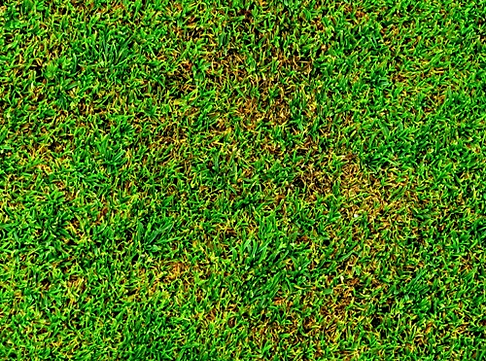
Natural balance and lead to disease development. Pythium may cause disease in several different ways.
Several species of Pythium cause diseases of roots and crowns that result in a general decline of turfgrass stands. The disease may occur in small patches or involve large areas, especially on highly maintained golf course greens. Symptoms are nonspecific with the affected turf appearing thin, off-color, and stunted. Symptoms may appear from early spring to late autumn and typically occur after a period of wet weather. Large areas of turf may wilt, turn brown, and die. The crowns of individual plants may appear water soaked and discolored. The root system may be greatly reduced and discolored, and roots may have a "rat-tail" appearance due to the separation of the cortex from the vascular cylinder. Crown and root rot can occur under both low and high soil temperatures depending upon the species of Pythium present.
Cite:M. Bess Dicklow, 2011: updated by Angela Madeiras, 2021
Many species of Pythium cause diseases of roots, crowns, and/or foliage that result in a general decline of turfgrass stands. Disease may occur in small patches or involve large areas, especially on highly maintained golf course greens. Depending on environmental conditions and the species present, symptoms may appear any time from early spring to late autumn. Microscopic examination of infected tissue typically reveals oospores (survival structures) and/or sporangia (spore-bearing structures) and zoospores (motile spores).
Pythium species are natural inhabitants of the soil. It is not unusual for the organism to be present at low levels without causing disease. Conditions that suppress turf growth and encourage the proliferation of Pythium can disrupt this
Root Rot
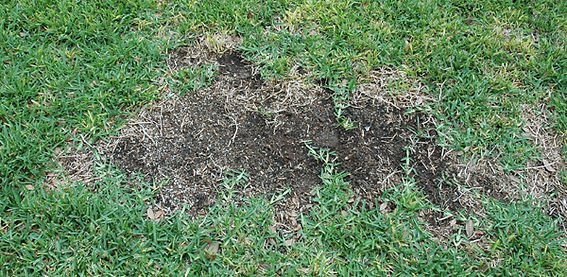
Dollar Spot
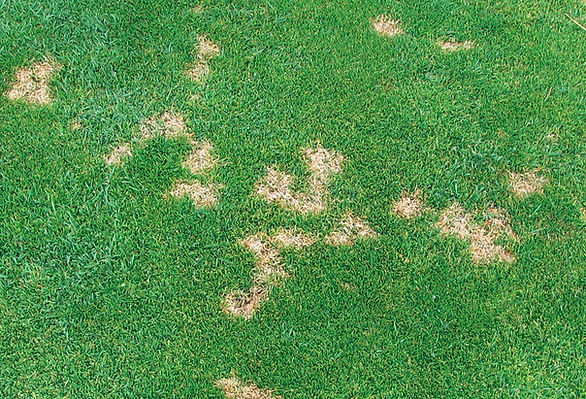
Dollar spot is caused by the fungus Clarireedia jacksonii (formerly Sclerotinia homoeocarpa). This disease affects highly managed turf stands worldwide. It is characterized by small, round, bleached to straw colored spots. On golf courses and other closely mowed turf, spots are generally 1-3 inches in diameter and often sunken; on high mown turf, they may be as much as 6 inches across. Where disease is severe, these spots may coalesce to form large, irregular areas of blighted turf.
When the pathogen is active and dew is present, a white, cottony, or cobwebby growth of fungal mycelium is visible. Lesions on individual leaves are white to straw colored, commonly with a tan to reddish brown margin, and often hour-glass shaped.
C. jacksonii survives unfavorable periods in infected plants or plant debris and as stromata (compact masses of mycelium) on leaf surfaces. The disease appears at temperatures between 60-90 °F and is favored by warm days, cool nights, and heavy dew. Dollar spot has the potential to be active from mid-May through mid-October. The optimal temperature and humidity requirements vary among biotypes of the fungus. The pathogen is spread by mowers, golf carts, golf shoes, wind, and water. Dollar spot is most severe in dry soils and where there is low nitrogen fertility. Low nitrogen fertility can reduce the efficacy of curative fungicide applications, because old infection centers often cannot adequately 'grow out' of former infection.
Cite: M. Bess Dicklow and James Popko, 2011: updated by Angela Madeiras, 2020
